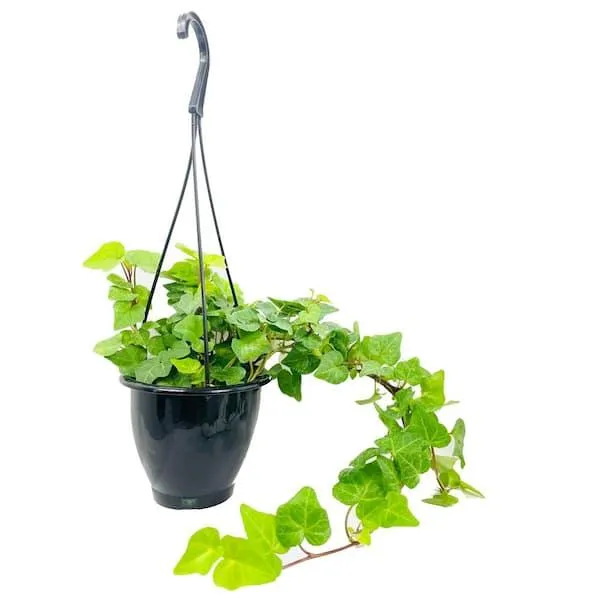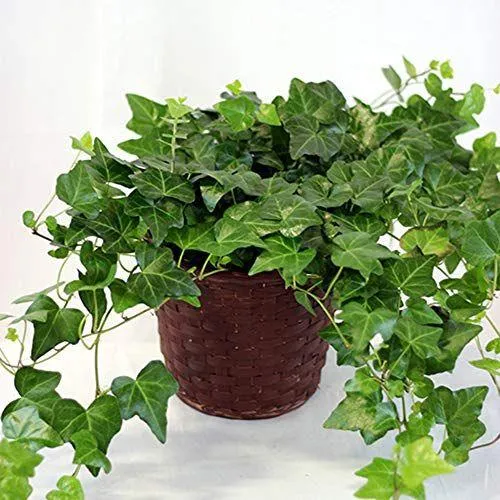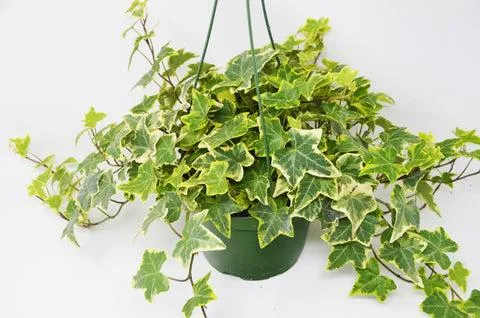A Complete Guide to Caring for Indoor Ivy
If you’re looking to add some lush green foliage to your home but don’t have a yard for gardening, indoor ivy is a great low-maintenance option. Coming in many different varieties with varied leaf shapes and colors, ivy can be a beautiful accent plant that thrives in indoor spaces. However, successfully keeping an ivy plant healthy indoors does require providing the right growing conditions and care.
Choosing an Ivy Variety
The first step is selecting an ivy species well-suited to life inside. Some popular indoor ivy options include:
- English ivy (Hedera helix): A vigorous climber with glossy dark green leaves. Very tolerant of low light.
- Needlepoint ivy (Hedera helix ‘Needlepoint’): Features small, delicate silver-speckled leaves that are beautiful but also more fragile than English ivy.
- Swedish ivy (Plectranthus verticillatus): Its thick, fuzzy grey-green leaves give it a striking texture. Likes medium light.
- Heartleaf philodendron (Philodendron hederaceum): Not a true ivy but behaves similarly. Heart-shaped leaves come in green or variegated varieties.
Avoid ivy types labeled as “toxic” or “poisonous” if you have curious pets or children. And steer clear of invasive outdoor varieties like Boston or Florida ivy, which can be difficult to control in the home.
Light Requirements
Most indoor ivies thrive in medium to low light conditions, making them ideal for shady windowsills or areas away from direct sun exposure. However, insufficient light will result in leggy, non-bushy growth. For English ivy, at least four hours of indirect sunlight daily is recommended. If light is very low, consider using a grow light.
Watering Needs
Ivy is susceptible to overwatering, which can cause root rot. The soil should be allowed to dry out slightly between waterings. As a rule of thumb:

- Water thoroughly whenever the top 1-2 inches of soil are dry.
- Avoid getting ivy leaves wet, as excess moisture can cause fungal problems.
- In winter when growth is slow, water just enough to keep the soil slightly moist.
It’s best to water ivy from the bottom by place the pot in a tray of water for 10-15 minutes until the soil is completely saturated, then drain well.
Fertilizing
During the plant’s active growth period from spring to fall, use a liquid houseplant fertilizer mixed at half the strength recommended on the label. Apply every 4-6 weeks, making sure to rinse leaves with plain water after application to prevent chemical burn. Slow-release fertilizer can also be used but is less flexible if you need to adjust feedings.
Pruning and Training
Ivy is a climbing plant that will spill over the edges of any container if left unchecked. Regular pruning keeps it bushy and shaped. In early spring, cut back leggy growth by one third using clean pruning shears. You can also train ivy up a moss pole, trellis, or mount in hanging baskets for an eye-catching display.
Propagate new plants by taking 4-6 inch stem cuttings in early summer, removing leaves from the bottom half and rooting them in water or potting soil. Keep the new cuttings in indirect light until roots form.
Repotting
Ivy has an extensive, dense root system and may need repotting every 1-2 years in spring or early summer. Transfer to a container just 1-2 inches wider than the root ball. Look for signs the plant has outgrown its pot like newly wilted leaves or roots visible at the drainage holes.

Use a well-draining, lightweight potting mix. Avoid heavy clay soils which retain too much moisture. Terra cotta or plastic pots work well. Repotting stimulates new growth, so give the ivy extra care until it settles into its new home.
Pests and Diseases
Most common indoor ivy issues include:
- Spider mites: Tiny spider-like bugs that suck plant juices, causing stippling or discoloration. Treat with insecticidal soap.
- Mealybugs: Fluffy white insects that secrete honeydew. Wipe off with cotton balls dipped in rubbing alcohol.
- Scale: Hard, dome-shaped insects that feed on leaves. Scrape off with your fingernail or use horticultural oil.
- Leaf spot/blight: Fungal diseases causing spots/blotches. Prune off infected foliage and water from below.
Monitor plants closely and quarantine any that appear diseased. Clean up fallen leaves, provide good air circulation, and don’t crowd plants together to prevent pest and disease issues.
Dealing with Brown Tips
Brown or crispy leaf tips are a very common ivy problem, especially in winter, caused by dry air or fluctuating environments. Some simple things you can try to remedy this:
- Mist the leaves with a spray bottle weekly to increase humidity around the plant.
- Group ivy plants together for a local humidity boost.
- Use a pebble tray—fill the saucer with pebbles and water to create humidity.
- Check if the plant needs watering and adjust as needed.
- Trim off badly damaged tips to maintain an attractive appearance.
With patience and diligence applying these care tips, your indoor ivy should thrive for many years, happily climbing or trailing wherever you place it indoors. Just be sure not to neglect its needs for light, water, fertilizer and occasional pruning. An established ivy makes a very hardy, low-fuss houseplant that brings nature inside!

I hope this guide has provided a comprehensive overview answering all your questions about properly caring for ivy as a beautiful indoor plant. Please feel free to reach out if you have any other questions! Wishing you luck in keeping your ivy plant happy and healthy.
Tips for Caring for Indoor Ivy
| Light Requirements | Watering |
|---|---|
| Bright, indirect sunlight. Place ivy near an east or west-facing window. | Keep soil moist but not soggy. Water when top inch of soil is dry. |
| Temperature | Humidity |
| Between 60-75 degrees F. Ivy does best in rooms that don’t experience extremes. | Mist leaves regularly to keep humidity levels above 50%. Trailing ivies like Pearls & Jade appreciate humid environments. |
| Fertilizing | Pruning |
| Use water-soluble fertilizer monthly during spring and summer. Reduce to every 2-3 months in winter. | Pinch back growing tips to encourage bushiness. Trim off any damaged or diseased parts. |
| Soil | Propagation |
| Well-draining, organic potting mix. Repot every 2 years or when roots fill the container. | Take 4-6 inch cuttings in spring or early summer. Root in water or moist soil mix. |
FAQ
-
What kind of sunlight does indoor ivy need?
Ivy basically needs lots of bright, indirect sunlight every day to stay healthy. Putting it in an east or west window is generally best since the sun is not as strong as a southern exposure. Make sure it’s not right in a window where it may get sunburned. On the other hand, ivy won’t do well in very low light conditions either.
-
How often should ivy be watered?
Water indoor ivy whenever the top inch or so of soil becomes dry. This generally works out to be about once a week. However, in the winter when daylight hours are shorter, you may need to cut back watering a bit to once every 10 days or so. Overwatering can cause root rot, which is no fun. At the same time, letting ivy dry out completely is also not great for its health.
-
What kind of soil is best for ivy?
Ivy does well in a variety of potting soils. A good drainage soil is important so the roots don’t sit in water. I’d recommend a general houseplant potting mix that has components like peat moss or coir to retain moisture along with perlite or vermiculite for drainage. Proper drainage is important despite my uncle Frank’s claim that his cats litter box soil produces stunning ivy!
-
How do you propagate ivy cuttings?
Taking cuttings from an existing ivy vine is a super easy way to make new plants! Sort of just cut 6-8 inch sections of stem, remove the bottom leaves, and put the cut end into a glass of water. Change the water every few days. Within a few weeks you’ll see roots start to grow. When they have a good root system, you can transplant them to potting soil. Seems like magic but it basically works!

-
What are some signs that an ivy plant needs help?
Yellowing or browning leaves can be an indication that an ivy needs something. It may be lacking fertilizer or having drainage issues. Watch out also for webbing or bugs – insects are the worst! Leaves that curl or look dry could mean it’s getting too much or too little water. Check the soul moisture level with your finger to be sure. Always listen to your plant – communicating is key to keeping them healthy!
-
How often should an ivy be repotted?
In general, ivies grown indoors can go 2-3 years between repotting. You’ll know it’s time when roots start growing from the drainage holes. Signs could be slowed growth, wilting leaves despite regular watering, or pot feels very snug when lifting. Use a container with just 1-2 inches more diameter. Repotting supports long term health, kind of like getting a checkup!
-
Are any varieties of ivy poisonous?
English ivy which is commonly grown as a houseplant is not toxic. However, some other types like poison ivy which grows outside should obviously be avoided! The sticky oil in its leaves can trigger an allergic reaction in some people that’s no fun whatsoever. Better do your homework on plant IDs before bringing anything unfamiliar indoors around kids or pets. When in doubt, admiring from afar is the safest bet.
